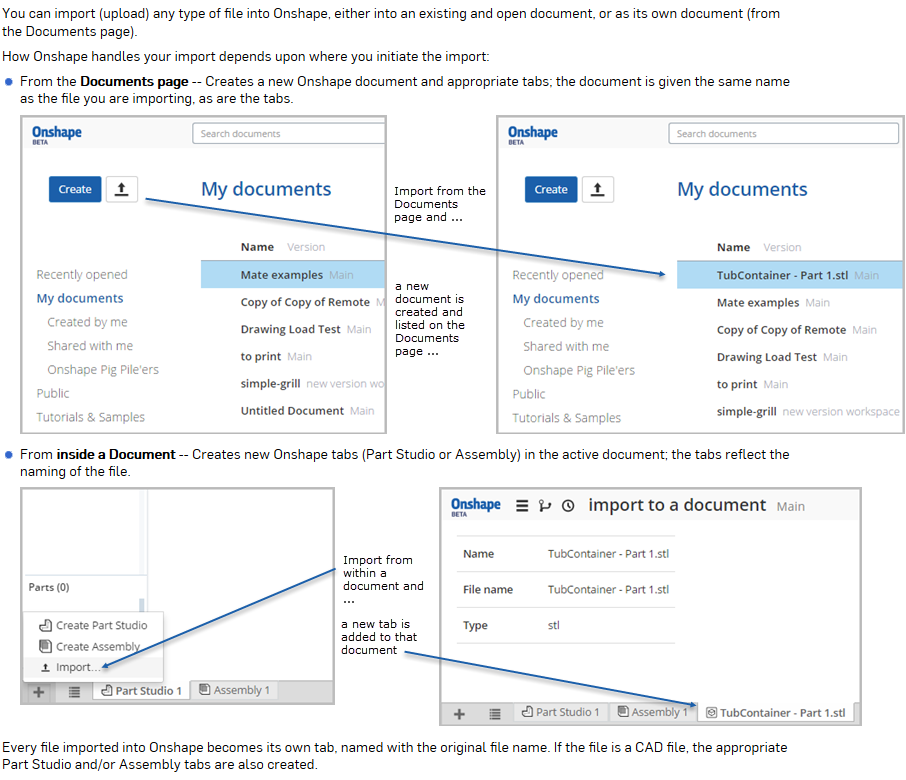

- #Openscad import stl how to
- #Openscad import stl software
- #Openscad import stl code
- #Openscad import stl download
data, "gear.stl") // Do whatever you want with the model in e.dataīoreDiameter: values. getElementById( "configurator")) ĭownloadFile(e. const worker = new Worker( "./") Ĭonst values = new FormData( document.
#Openscad import stl download
Then when we get results back from the worker we download them as a file to the users computer. It will create the worker and send it a message with all the variables from our UI.
#Openscad import stl how to
This will make sure that the worker will load safely.įinally we need to tell the webpage how to talk to the worker. Use a bundler like Rollup or Webpack to combine all the imports. Currently workers don’t support ES6 imports like we used on the first line.
#Openscad import stl code
Next, put the worker code in a folder next to all the files downloaded from the releases page at DSchroer/openscad-wasm. When it is finished generating the 3D file, it will pass the data back to the webpage. The worker code waits for a message to be sent to it from the webpage, then it will run the exact same command line we used as the example above. By running our code in a worker, it can take as much time as it wants while the site stays fast and the user can keep browsing. Web workers are like background tasks for websites. Luckily there is a tool in browsers called web workers that we can use to avoid the freezing.

We could run it in the page but that would freeze the browser while the model generates. We need a way to run OpenSCAD when the user clicks the generate button. The user wont even know that they are editing OpenSCAD models unless you tell them. Hook this form up in any website and it will look seamless. At the bottom of the form there is a button that the user can click when they are finished customizing the gear. This is the same kind of form as you have seen all over the internet, there is one input for each of the variables in our SCAD file. Instead lets use some web development skills and build a form using HTML. Command line is great for programmers but is scary for most people. Now we need to make things more user friendly. This process of setting variables in the model is the exact same approach that the configurator on this site will use.

If you wanted a gear with 100 teeth, running the following command line code on your computer would generate a STL file containing such a gear. Gear(circular_pitch=PITCH, gear_thickness=THICKNESS, number_of_teeth=TEETH, bore_diameter=BORE_DIAMETER, hub_diameter=BORE_DIAMETER+2) I am using the MCAD library to generate everything. It generates a 3D gear using four variables to control the pitch (density of teeth), number of teeth, thickness of the gear and size of the center bore hole. For example here is one with a few variables. The first thing you need is a SCAD model. In this post I will be going through an example of how to build a configurator where anyone can customize the 3D models that you design. With this port, anyone can package and share OpenSCAD projects on the internet. A WebAssembly port of OpenSCAD that can be run in any modern browser. So, I got to work and after a few months of hard effort I created this: DSchroer/openscad-wasm. Sites like Thingiverse looked like the solution but I was looking for something that I could put on my website, that would have zero cost, and where I could fully customize the user experience.
#Openscad import stl software
As a software developer, I find it the most intuitive and scalable way to build models. Build an OpenSCAD WASM Configurator - Dominick Schroer's Blog


 0 kommentar(er)
0 kommentar(er)
